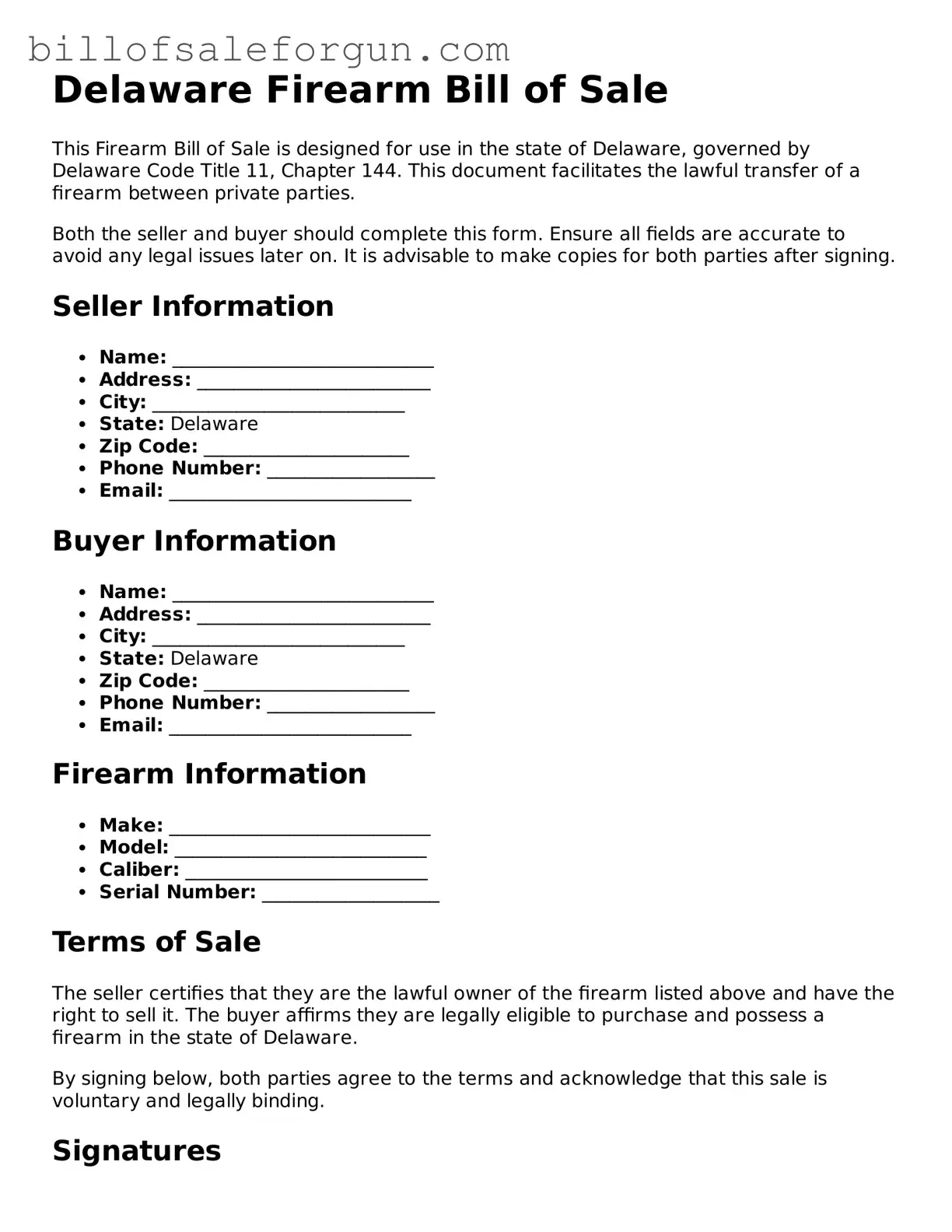Similar forms
The Delaware Firearm Bill of Sale form shares similarities with a Vehicle Bill of Sale. Both documents serve as proof of transfer of ownership. In the case of a vehicle, the seller provides the buyer with a document that details the vehicle's make, model, year, and identification number. Similarly, the firearm bill of sale includes the details of the firearm being sold, such as its make, model, and serial number. Both forms are typically signed by both parties to confirm the transaction and may require notarization to enhance their legal standing.
Another document akin to the Delaware Firearm Bill of Sale is the Personal Property Bill of Sale. This form is used for various types of personal property transactions, including furniture, electronics, and other tangible items. Just like the firearm bill of sale, it includes a description of the item being sold, the purchase price, and the names and signatures of the buyer and seller. Both documents serve to protect the interests of both parties by providing a record of the transaction.
The Real Estate Purchase Agreement is another document that bears resemblance to the firearm bill of sale, although it pertains to real property rather than personal property. This agreement outlines the terms of a real estate transaction, including the property description, purchase price, and closing date. Like the firearm bill of sale, it requires signatures from both the buyer and seller to validate the agreement. Each document serves to formalize the transfer of ownership and provides a legal record of the transaction.
A Lease Agreement is similar in that it also formalizes a transaction between two parties, though it typically involves the rental of property rather than a sale. This document outlines the terms of the lease, including the duration, rental amount, and responsibilities of both the landlord and tenant. While it does not transfer ownership, it establishes a legal relationship and obligations, similar to how a bill of sale establishes ownership of a firearm.
The Equipment Bill of Sale is another document that parallels the Delaware Firearm Bill of Sale. This form is used when selling or buying equipment, such as machinery or tools. It includes details about the equipment, such as its condition, specifications, and purchase price. Both documents aim to create a clear record of the transaction and protect the rights of both parties involved in the sale.
In the realm of business, a Business Asset Bill of Sale is comparable to the firearm bill of sale. This document is used when transferring ownership of business assets, which can include inventory, equipment, or intellectual property. It details the assets being sold, the purchase price, and the parties involved. Like the firearm bill of sale, it serves as a legal record of the transaction and helps to clarify the terms of the sale.
Lastly, the Gift Receipt can be likened to the Delaware Firearm Bill of Sale in that it documents the transfer of an item, though it is used in the context of gifting rather than selling. This document typically includes a description of the item, the name of the giver, and the recipient. While it does not involve a monetary exchange, it provides a record of the transfer and can be important for tax purposes, similar to how a bill of sale might be used to document a firearm transaction.
